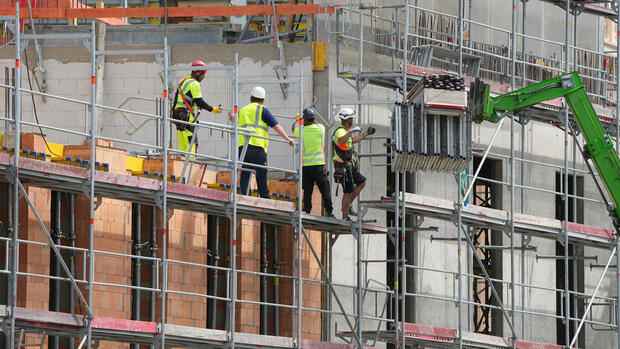In some sectors, double-digit increases have often been agreed in wage agreements over the past few months.
(Photo: dpa)
Berlin According to a study, the tariff increases agreed so far do not by far compensate for the sharp rise in inflation this year. According to the agreements available to date, collectively agreed wages are likely to grow by an average of 2.9 percent in 2022, according to a study by the collective bargaining archive of the trade union-related Institute for Economic and Social Sciences (WSI).
After deducting the expected inflation rate, however, they fall by 3.6 percent in real terms. “After the negotiated wages increased relatively significantly in real terms in the 2010s, in 2022 many employees are threatened with real wage losses for the second year in a row,” said Thorsten Schulten, head of the WSI collective bargaining archive. The study takes into account all tariff increases completed in the first half of the year and those already agreed in previous years for 2022.
“In view of the completely uncertain development of the Ukraine war and its economic consequences, collective bargaining alone in many sectors is unable to compensate for the employees’ loss of purchasing power,” said Schulten.
“Additional relief measures by the state are necessary here.” At the same time, Schulten criticizes the appeals to the trade unions to exercise restraint. “A sober look at the tariff data shows that the much-cited wage-price spiral is a mirage,” said the expert.
Top jobs of the day
Find the best jobs now and
be notified by email.
“On the contrary, there is a risk that real wage losses will further weaken private demand and thus further damage economic development.”
Real wage increases are also possible
However, according to the information, there are also some collective bargaining sectors in which, contrary to the trend, not only is the price development balanced out, but real wage increases can also be observed.
These included above all some classic low-wage sectors such as the hotel and catering trade, the building cleaning trade or temporary work. Here, double-digit increases have often been agreed in collective bargaining agreements over the past few months, especially for the lower wage brackets.
“These collective bargaining sectors are reacting to the increasing shortage of workers and skilled workers with extraordinarily high wage increases,” explained Schulte. “At the same time, they use the increase in the statutory minimum wage to twelve euros decided by the federal government to rebuild the collectively agreed wage structures above this.”
According to the information, collective bargaining increases that were set in 2021 or earlier will take effect for almost eleven million employees this year. This includes large industries such as public service or retail.
A series of further negotiations will follow in the second half of the year – for example in the metal and electrical industry as well as in the chemical sector, where talks were deliberately suspended in the spring.
More: Training guarantee for everyone – traffic lights should present a concept, employers are alarmed
